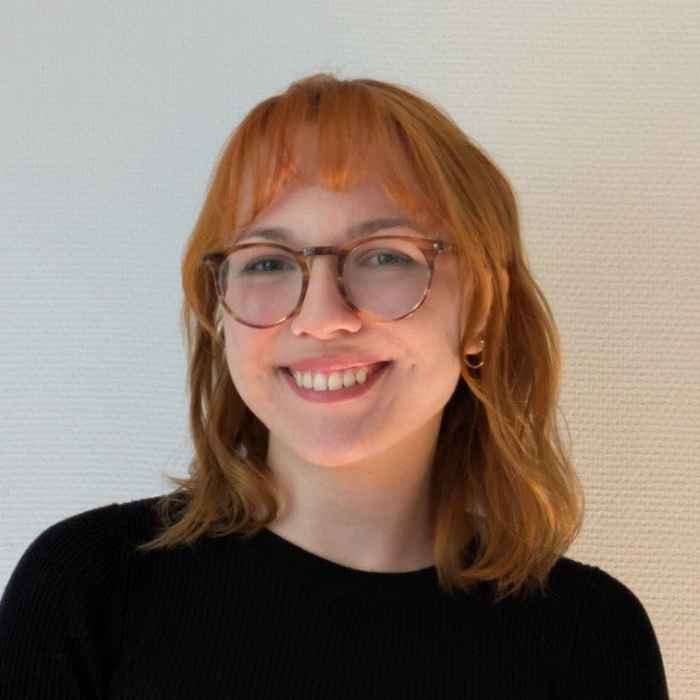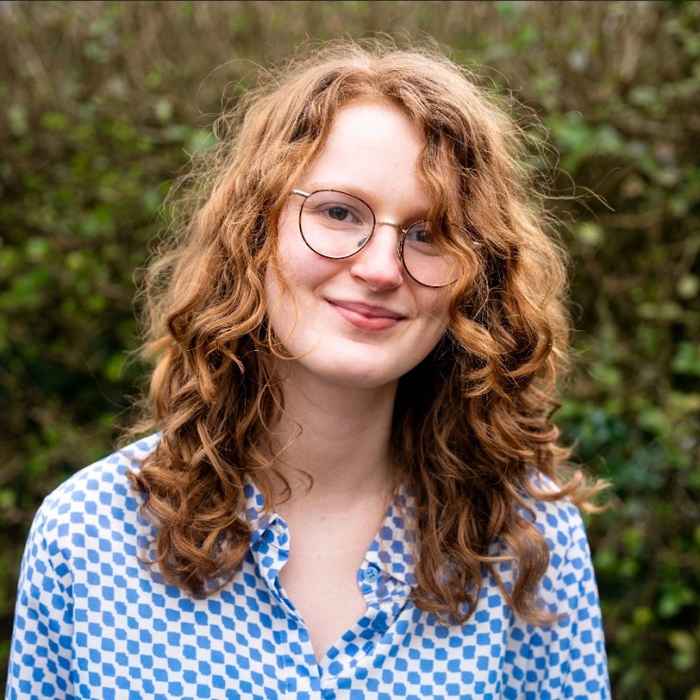KHMW Young Talent Awards for Daria Trotsenko and Amber Visser
30 October 2025
Daria Trotsenko – QCD precision computations

Daria Trotsenko’s master's project was supervised by Wouter Waalewijn and Johannes Michel. The project was funded by a special FNWI/IoP Physics & Astronomy Scholarship fellowship for Ukrainian students. Daria performed an impressive calculation in perturbative quantum chromodynamics (QCD), which is of great importance for the ongoing program of precision measurements at the Large Hadron Collider (LHC) at CERN. Many high-precision LHC measurements, such as those of the mass of the W boson, are sensitive to very small deviations from the Standard Model of particle physics. This sensitivity even allows for the search for new physics, of which the energy exceeds that of the LHC, via indirect effects at the lower energies of the measurements. However, the success of these experimental analyses relies heavily on correspondingly precise theoretical predictions. Such predictions are difficult due to the substantial effects of QCD on the quarks and gluons in the colliding protons.
The magnitude of these effects requires theoretical particle physicists to work with a technique known as perturbation theory. Daria's results concern detailed analytical predictions for the production and decay of Z bosons, virtual photons, and W bosons at the full second order in QCD perturbation theory. This places these results among the absolute top of analytically known LHC processes. She has, for the first time, described the decay of these bosons at this order, analytically, in complete detail. Including this decay is crucial, for example, for extracting the mass of the W boson.
Amber Visser – altermagnetism

In the world of magnetism research, there's increasing attention for a new type of magnetic ordering: altermagnetism. Altermagnets are materials without a magnetic moment – which is the case for many known magnetic materials – but with several new properties that arise in materials that display an entirely new symmetry. The existence of altermagnets was theoretically predicted in 2019, and recently, there has been growing experimental evidence that these surprising materials actually exist.
During her master’s project, supervised by Jasper van Wezel and Corentin Coulais, Amber Visser conducted a very extensive and detailed theoretical analysis of an altermagnet inspired model for a new type of quantum material displaying the so-called piezoelectric effect. She also designed and fabricated an initial prototype for a mechanical metamaterial that precisely mimics the properties of the quantum model. With this, her thesis took steps towards demonstrating that key features of altermagnets can be replicated in non-magnetic systems, thereby providing a blueprint for designing non-magnetic functional materials that exploit altermagnet-like symmetry.
KHMW Young Talent Awards
The Royal Holland Society of Sciences and Humanities (Koninklijke Hollandsche Maatschappij der Wetenschappen, KHMW) annually offers their Young Talent Awards to promote scientific education in technical and science subjects. The 19 graduation prizes reward exceptional study results (in the form of a master's thesis or research report) for students who graduate from a Dutch institution for scientific education in that academic year. The prizes are financially supported by the Lorentz Fund.
Two of the prizes are for physics research: the Physics Award for general physics, and the Theoretical Physics Award for theoretical research – both coming with €3000 in prize money. The award ceremony will take place on November 24th at the Hodshonhuis in Haarlem. The fact that both prizes were awarded to students at the Institute of Physics this year, with Amber Visser receiving the Physics Award and Daria Trotsenko receiving the Theoretical Physics Award, is very special. IoP warmly congratulates Amber, Daria and their supervisors!